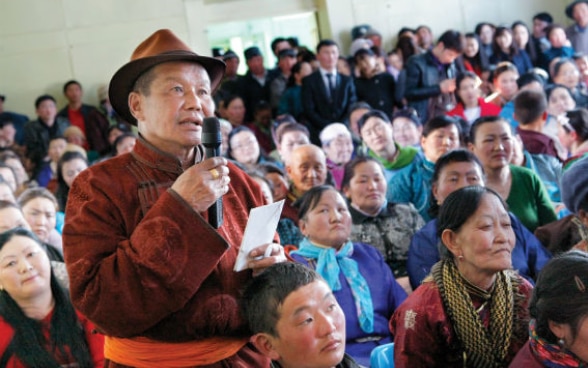
One of these advancements has been the introduction of the Local Development Fund (LDF) - a pool of state funds that enables Mongolian citizens to participate in identifying priorities for public investment. People are more aware of, and are largely satisfied with, the LDF and its investment in priority areas that have been identified by local communities.
“When we speak to local people, we are repeatedly told that an official sitting in Ulaanbaatar doesn’t know as well as the local population what is needed in local areas, for example for a school or a hospital”, said Diepak Elmer, SDC in Mongolia Deputy Director of Cooperation.
The Office of the President, a pioneer in the implementation of direct democracy in Mongolia, together with Mongolian civil society organisations, is willing to go beyond consultation and establish citizen participation as a right of citizens and a duty of local governments. The model of the 200-year-old popular referendum in Switzerland is being used as a point of reference.
Two Swiss experts from the Centre for Democracy Studies in Aarau travelled to Mongolia in January on a week-long advisory mission. Together with Mongolian legal experts and civil society democratic leaders, they analysed how to legally formulate a referendum mechanism that would work for both citizens and local governments. They also explored its inclusion in a draft of the Law on Public Participation.
At a public discussion in January focused on how direct democracy can be incorporated into a representative democracy, Professor Auer from the Institute of Democracy Studies in Switzerland shared the Swiss experience and examples of how representative and direct democracies can complement one another.
Professor Auer highlighted that direct democracy was not unknown to the Mongolians, referring to the Article 3 of the Constitution of Mongolia. He said the direct participation of citizens in state affairs as a way of exercising state power was mentioned before the representative system.
SDC’s Governance and Decentralisation Programme is supporting the drafting of the Law on Public Participation, which it is hoped will be passed by the Parliament in 2015.
On request from Mongolian authorities, SDC funded a documentary film that captured Mongolia’s direct democracy practices and experiences. Directed by internationally awarded film director S. Byamba, the film focused on the introduction of decentralisation and citizen participation in decision-making in Mongolia.

